There’s an open bottle of olives in your fridge. You’ve used a third in a pizza, a small bunch in a salad, and you’re wondering how long you can refrigerate the rest.
If you don’t eat olives all that often, knowing how long you can keep them before they go bad is quite useful.
The good news is, no matter if we’re talking about green or black olives, stuffed, pitted, or whole, the storage guidelines, and indicators of spoilage are pretty much the same.
The bad news is, it’s difficult to say what’s the shelf life of an open bottle of olives.
But first things first.
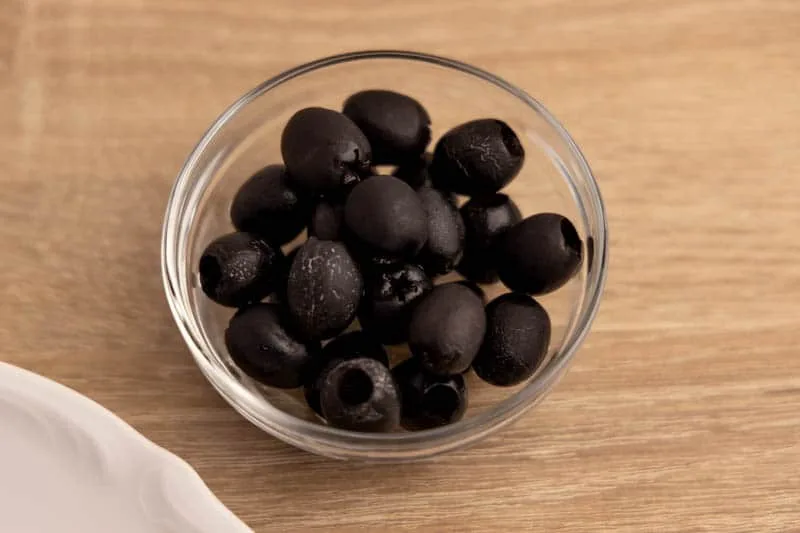
Can Olives Go Bad? How To Tell They Are Bad?
Olives can spoil, and there are a couple of things you should check before eating old olives.
If the lid of an unopened bottle or jar is popped instead of flat, that’s a sure sign something went wrong. Examine the olives carefully before eating, or discard them for safety reasons. Both choices are fine.
Once you open up the container, check how the olives look, smell, and taste.
For starters, look for visual indication of spoilage, like mold.
If there are some while floaties on the surface of the brine, you can remove them and eat the olives just fine ([MZ]). I won’t blame you if you throw out the olives when you see those, though.
If it’s a brine-free package, mold means the olives are done for.
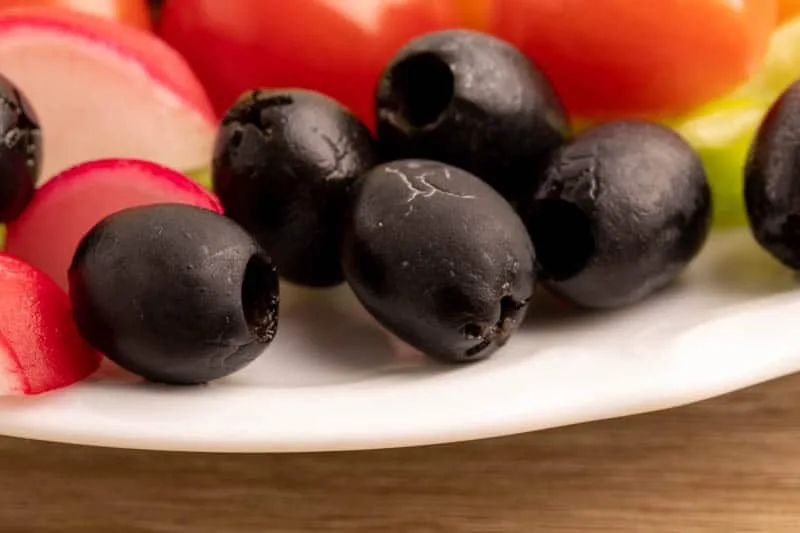
Second, give it a good whiff to check if the brine smells fresh or not.
I once had a jar of olives that, for some reason, went off after a couple of days in the fridge. The smell was disgusting.
Even if those olives were still edible, all I wanted to do was to get rid of them.
In short, if it smells bad, discard it.

If both smell and visuals are okay, it’s time to give those little guys a taste.
In case there’s something off with the flavor, throw them out. If the taste is okay, they are most likely perfectly safe to eat.
Also, olives can lose some of their texture over time. If that happens, they work better in cooked dishes than in salads.
Pay special attention to all of the described factors if it’s a liquid-free package. They don’t last as long and quickly go bad if the packaging has a tiny hole.
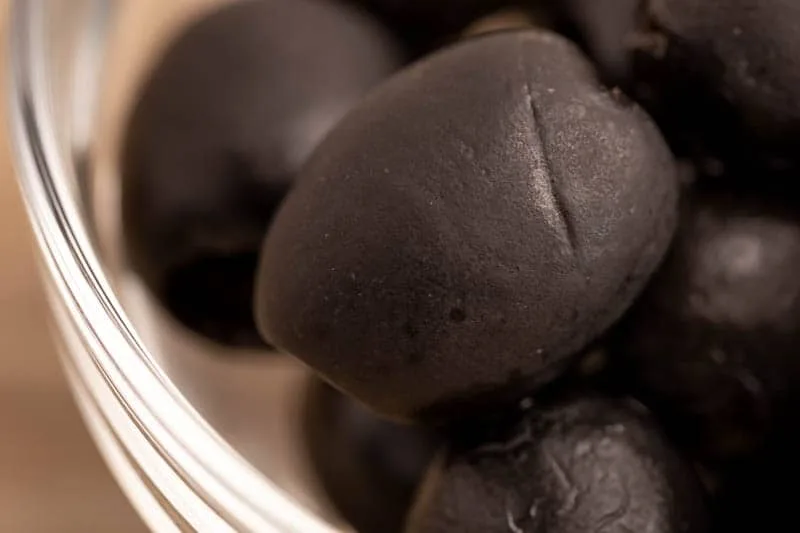
How Long Do Olives Last?
When it comes to shelf life, there’s not much difference between different cultivars (like Kalamata or Manzanilla) and varieties of olives.
For an unopened package, go with the best-by date on the label. For most types of olives, their shelf life is between a year or two, which is already included in that date.
Olives will likely stay fine for a couple of weeks or even months past the date on the label.
Once you open the package, abide by the storage time indicated on the label.
The label of olives I usually buy says I should finish the jar within a week. Other brands typically ask you to consume the fruits within a week to maybe ten days ([CA]).
If it’s a liquid-free package (that is, the olives aren’t submerged in brine, vinegar, or oil), they usually keep quality between 3 and 5 days of opening.
That’s it for the straightforward part.
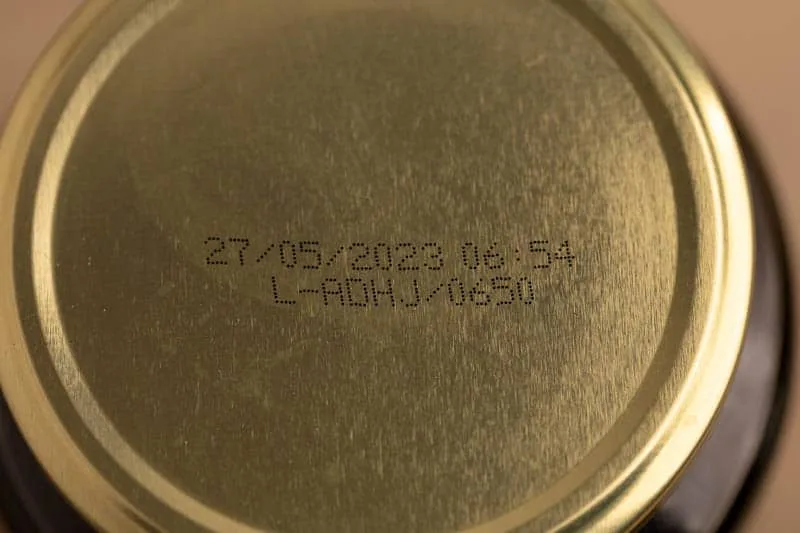
I’m sure you’ve heard of people who store open jars of olives for months on end, and the olives stay perfectly fine. Some brands, like Mezzetta, say that their olives should last a year after opening ([MZ]). How does that work?
I don’t have all the answers, but I can make an educated guess.
First, some brines are saltier than others, and stronger brines are less likely to spoil.
Second is food hygiene. If you always use clean utensils to grab olives, chances are you won’t introduce any harmful bacteria to the brine.
If you take good care of the olives, you should be able to get at least an extra week or two of storage for liquid-packed olives.
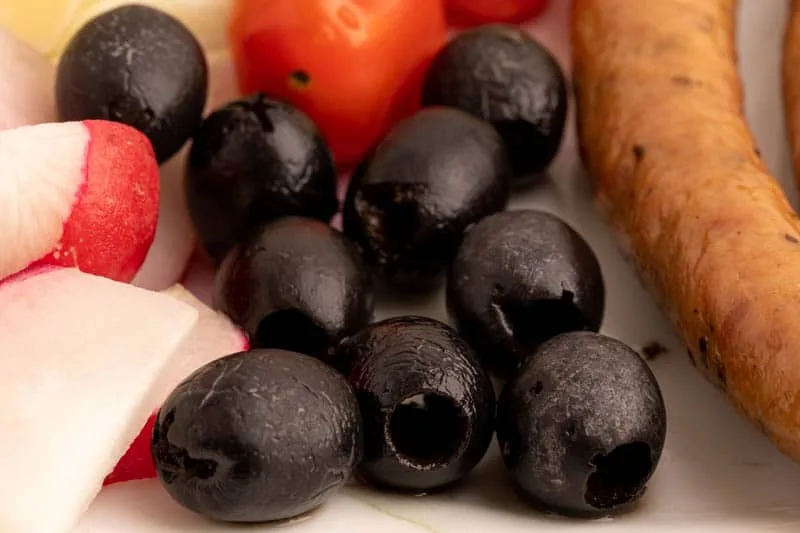
How To Store Olives?
An unopened package should sit at room temperature or slightly below, away from heat sources and in a closed cabinet.
Storing olives in darkness is especially important for bottles and jars. That’s because they let the light in, and prolonged exposure might result in an altered taste.
An open package of olives belongs in the fridge tightly sealed, unless the label says otherwise.
If the olives are liquid-packed, leave the liquid as is; it helps keeps the fruit fresh.
And make sure the brine always covers the olives. Otherwise, the fruits that are above the surface level might spoil.
In case you already discarded the brine, you can easily make your own with just salt and water ([CA]).
For liquid-free packages, seal the olives tight after opening. If the pouch isn’t resealable, use a small airtight container or a freezer bag.
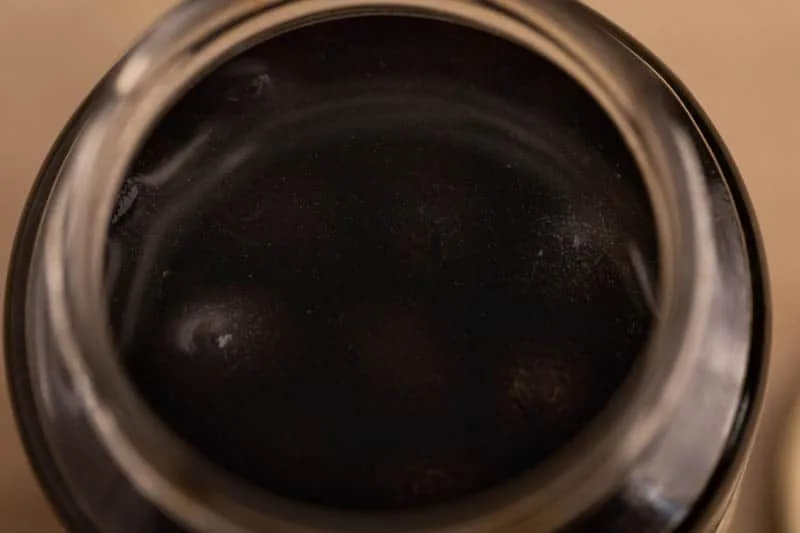
Summary
- To check for spoilage, look for visual cues like mold, off odor, or changes in flavor; especially if it’s a liquid-free package.
- Opened liquid-free olives usually last up to 3 days. Liquid packed ones typically keep for at least a week or two, but often much longer if you take good care of them.
- Refrigerate the olives after opening. Make sure they are submerged in brine or any other liquid they come in. If the package was liquid-free, make sure you seal the leftovers tightly.